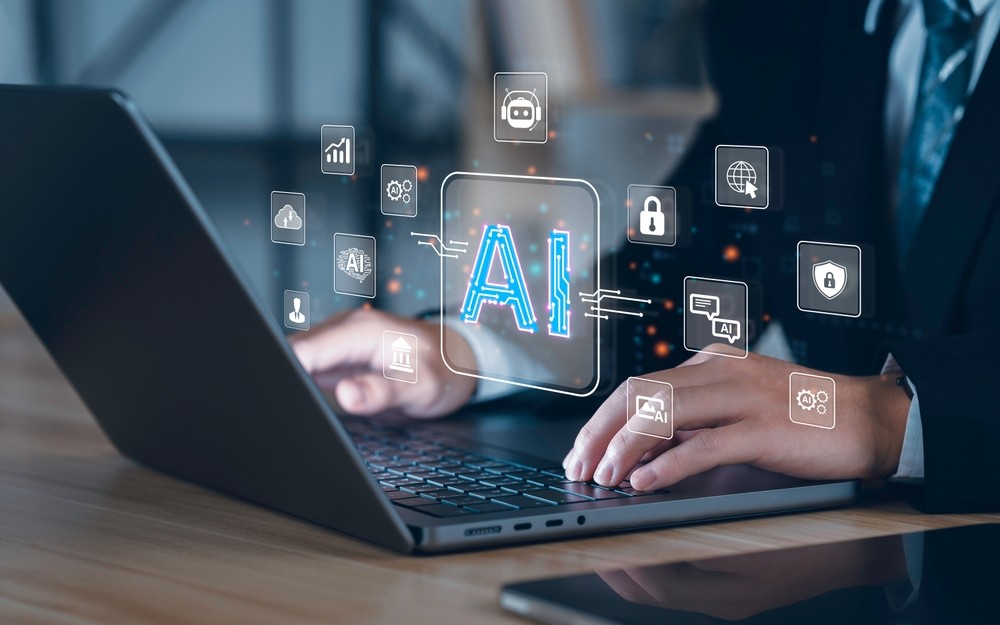The line between ‘technical’ and ‘business’ jobs is about to vanish - so if you're not preparing now, you are falling behind. This division has been holding organisations back for many years, and with the tech skills gap an increasing problem, it’s time to break down job roles and reenergise the workforce. No-code and AI are changing this by reshaping jobs, making it easier for workers outside the IT department to harness tech to fuel innovation. Departmental barriers are already dissolving down thanks to these technologies, as are the ‘guardrails’ around individual job titles, as everyone from product managers to content writers take hands-on control, and expand their skillsets. The biggest barrier to AI adoption isn’t the tech - it’s leaders still clinging to 20th-century job descriptions.
AI, paired with no-code or low-code approaches, is already extending the capabilities of workers, enabling people to ‘break out’ of predetermined job roles. This means that ordinary business users, across departments from marketing to operations, can streamline their own workflows, in effect redesigning their own jobs. No-code puts power in the hands of non-tech experts, and erases traditional silos, reshaping what job roles mean. This empowers people to deliver more, deliver faster, and expand their abilities.
This transformation requires bravery and a culture shift. To oversee it effectively requires not just the right technology, but also a people-first approach, and leaders who are happy to take risks and move beyond the stiff, pre-defined job titles of years gone by.
Cross-functional teams are reshaping work
How quickly can no-code and AI drive change? David Cheng was selling cars at Stellantis UK, before using no-code technology to spark change across the organisation, including creating AI-supported communication solutions. At Stellantis UK, the organisation had previously been sceptical about automation, and clung to traditional IT structures. But the power of no-code reshaped the business, helping to cut five working days of manual message reviewing for their aftersales team using AI, all without writing a line of code. For Cheng, no-code has enabled him to deliver progress in the area he worked, cutting non-value-adding work for grateful colleagues, and allowing the team to focus on customers.
In the past, product managers were primarily responsible for understanding customers and translating those insights into requirement documents, which were then handed off to designers and engineers. Today, the rise of no-code platforms, AI tools, and even “vibe coding” is reshaping how these three roles and others collaborate. No-code makes it possible for almost anyone on the team to prototype. AI takes on heavy-lift tasks like data analysis, wireframing, and even code generation. And vibe coding, while less formal, reflects a growing culture of experimentation where teams lean into creativity and speed. In turn, prototypes can be created and tested much faster, and the lines between responsibilities are becoming more fluid.
Product managers, engineers, and designers are no longer working in isolation, but in a shared creative loop that accelerates progress and sparks new ideas. Product managers still guide the “why” and the “what,” but now they can experiment directly with prototypes, closing the gap between strategy and execution. Designers, using no-code tools, can map and test user journeys in real time, uncovering friction points and iterating on experiences before development even begins. Engineers, empowered by vibe coding, no longer need to write every line of code themselves; instead, they validate, scale, and refine AI- or no-code-generated outputs, applying their expertise to the most complex challenges. The result is faster iteration, more inclusive collaboration, and products that evolve with both speed and quality.
Rather than diminishing the importance of each role, these shifts are expanding their impact. Designers gain greater influence on the user journey, engineers become orchestrators of scalable systems, and product managers can bring solutions to life more directly. Content specialists, too, are extending into areas like layout and channel optimisation. AI and no-code are enabling teams of hybrid generalists to collaborate in new ways, fostering faster iteration, more creativity, and deeper cross-functional cooperation. The immediate benefits are clear, but the long-term impact on how organisations innovate may be even greater.
Overcoming the AI skills gap
The AI talent and skills gap is a real problem for many organisations, with McKinsey forecasting that demand for tech and AI talent is going to remain up to four times the rate of supply until 2027. No-code tools powered by AI though can help organisations cut through this skills shortage, by allowing non-technical teams the freedom they need to build tools without having to wait on development cycles.
Let’s be honest. Even the most advanced organisations are finding that established ways of building products are being outpaced. For years, multi-stage development processes, however agile or efficient they once seemed, set the rhythm for how teams worked. But the arrival of AI, no-code platforms, and new approaches like vibe coding is changing that rhythm almost overnight.
Teams that previously prided themselves on speed and agility are discovering that their tried-and-tested practices are suddenly too slow. Product managers, engineers, and designers can now collaborate in real time, prototyping and iterating far faster than traditional processes allowed. What once felt like industry-leading efficiency is rapidly becoming yesterday’s news.
The challenge today isn’t about avoiding the “bad old days” of software delivery — it’s about recognising that the bar has been raised again, and adapting quickly enough to stay ahead.
Even in organisations with deeply specialised experts who can already deliver high-quality software at speed, a new frontier is emerging. Low-code and no-code tools are enabling people with far less technical experience to step in and shape meaningful change. This shift challenges the traditional setup of expert-only teams: suddenly, innovation isn’t limited to the specialists. With centers of excellence helping to streamline adoption and share best practices, silos break down and a much wider range of voices can shape solutions. Innovation is no longer the preserve of the few, it’s becoming a capability of the many.
Building future-proof teams
Building environments where non-technical users can safely and effectively rebuild their own jobs with automated and AI-driven solutions is the goal. This enables leaders to strengthen their teams for the long-term, expanding their skill sets and breaking out of legacy divisions.
Naturally, some control is required: it can’t be a Wild West scenario. The ideal is an environment where workers can take charge of their own challenges and solve them without fear. To create this sort of future-proofed team requires business leaders to build the right company culture, with a careful mix of systems and processes to guide workers in the right direction.
A key part of this is to understand your own technology landscape. When you start to automate, and to empower your workers to automate, the level of complexity can build up within your organisation. It can be easy to find yourself unable to see the wood for the trees. So visual approaches to no-code and AI automation are key, allowing non-technical workers and business leaders to take an overview of technology and understand its interaction across the organisation.
By having a clear, visual way to oversee innovation within low- and no-code platforms, organisations can help non-technical workers to work closely with other teams and future-proof the organisation as a whole. Clear, visual overviews of how processes and teams interact will also be vital to establishing guardrails around technology and ensuring businesses drive safely towards their goals.
No more silos
Breaking down barriers between developers and the rest of the business holds the promise to transform many organisations from top to bottom. With traditional job roles shifting and expanding, workers are empowered to expand and future-proof their skill sets.
Business leaders can break down silos within their organisation, driving business results today, and paving the way for a more innovative future. The organisations that act now will own the future. The rest will be asking their competitors how they did it.






